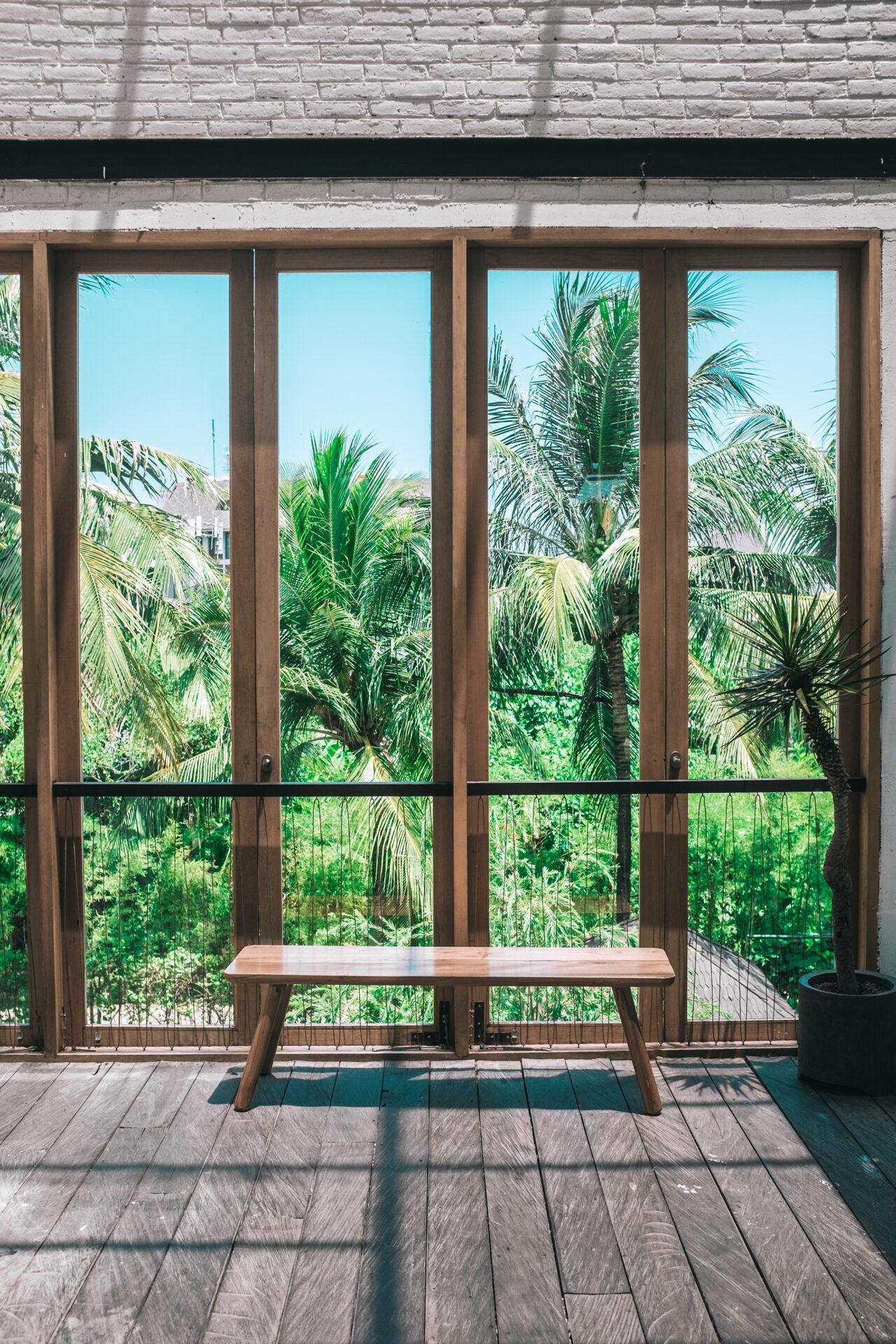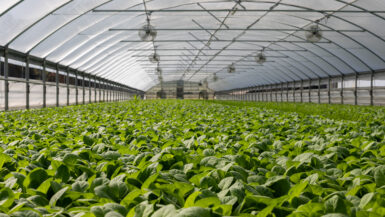This article aims to provide valuable indoor vertical garden design tips for beginners on creating an aesthetically pleasing and functional indoor vertical garden. We will delve into the core topics of selecting suitable plants, appropriate structures and containers, ensuring proper lighting and irrigation, and maintaining your vertical garden for optimal growth and longevity.
Vertical gardening has become increasingly popular among urban dwellers and gardening enthusiasts. With limited space in modern living environments, finding innovative ways to bring nature indoors while maximizing available space is essential.
So, whether you’re an aspiring green thumb or a seasoned gardener looking to expand your horizons, read on to discover how to transform your indoor space into a lush, thriving vertical garden.
Selecting the Perfect Location for Your Vertical Garden
Finding the optimal spot for your indoor vertical garden ensures its long-term success. The location will determine the type of plants you can grow, the amount of light they receive, and the overall visual appeal of your garden. This section will discuss essential factors to consider when choosing the right spot for your vertical garden and guide you in selecting suitable plants based on the location’s unique characteristics.
Considering Light Requirements
One of the most important factors to consider when selecting a location for your indoor vertical garden is the amount of natural light it receives. Different plants have varying light requirements, and choosing plants that thrive in the available light conditions is essential.
For example, if your desired location receives only low to medium light, consider shade-tolerant plants such as ferns and pothos. On the other hand, if the spot gets bright, indirect light, you can opt for plants like philodendrons or spider plants.
Maximizing Space Usage
Vertical gardens are an excellent solution for maximizing limited indoor space. Choosing a location that allows for optimal growth without overcrowding is essential. Ensure that there is enough room for your vertical garden structure and that it doesn’t obstruct doorways or walking paths. Additionally, consider the height of your space, as some plants will grow taller over time and may require additional vertical clearance.
Accounting for Temperature and Humidity
Indoor temperature and humidity can impact plant health, so selecting a location with suitable conditions for your chosen plants is crucial. Most indoor plants prefer temperatures between 65-75°F (18-24°C) and humidity levels around 40-60%. Avoid placing your vertical garden near heating or cooling vents, as these can create fluctuations in temperature and humidity that may harm your plants.
Accessibility for Maintenance
Finally, choosing a location that offers easy access for regular maintenance tasks such as watering, pruning, and fertilizing your indoor vertical garden is essential. Ensure that you can comfortably reach all plants within the vertical garden structure and that there is enough space to maneuver when performing these tasks.
By carefully considering these factors and selecting the perfect location for your indoor vertical garden, you’ll be well on your way to creating a thriving, visually stunning garden that enhances your living space and brings a touch of nature indoors.
Choosing the Right Plants for Indoor Vertical Gardens
Selecting the appropriate plants for your indoor vertical garden is just as important as choosing the perfect location. A harmonious combination of plants will make your garden visually appealing and ensure its longevity and success. When selecting plants for your indoor vertical garden, consider light requirements, growth habits, and compatibility with other plants. This subsection will explore popular plant choices and guide you in creating a diverse and thriving vertical garden.
Understanding Plant Light Requirements
As mentioned earlier, light is critical when selecting plants for your indoor vertical garden. Choosing plants with similar light requirements is essential to create a balanced and thriving garden. Low-light plants like snakes, ZZ, and pothos are excellent choices for areas with limited natural light. Medium-light plants like dracaenas, philodendrons, and spiders thrive in bright, indirect light. Lastly, high-light plants like succulents and herbs require ample sunlight and may need supplemental lighting if natural light is insufficient.
Selecting Plants with Complementary Growth Habits
Choosing plants with varying growth habits is essential to creating a visually dynamic and functional vertical garden. Incorporate a blend of trailing plants like ivy or string of pearls, which cascade beautifully from hanging containers, with upright plants like snake plants or ferns. This mix of growth habits will add visual interest to your vertical garden and create a lush appearance.
Considering Plant Compatibility
To ensure a thriving vertical garden, choosing compatible plants is essential. Some plants may not fare well when placed too close to others due to competition for resources, differing water requirements, or susceptibility to pests and diseases. Research each plant’s needs and group plants with similar requirements together to minimize potential issues.
Adding a Touch of Edible Greenery
Herbs like basil, mint, and parsley are excellent choices for those looking to incorporate edible plants into their indoor vertical garden. These herbs are easy to grow indoors and can be harvested regularly for use in your favorite dishes. Just be sure to provide them with adequate light and proper drainage to ensure a bountiful harvest.
By carefully selecting the right plants for your indoor vertical garden, you’ll create a lush, visually appealing space that showcases various textures, colors, and growth habits. Consider each plant’s unique requirements to ensure a healthy, thriving garden that brings joy and natural beauty to your indoor living space.
Maximizing Space with Creative Design Ideas
One of the most significant benefits of indoor vertical gardening is its ability to transform limited spaces into lush, green oases. With a bit of creativity and thoughtful design, you can make the most of your indoor space and create a vertical garden that is both functional and visually stunning. In this subsection, we will explore innovative design ideas that maximize space utilization, enhance aesthetic appeal, and help you create an indoor vertical garden that thrives.
Utilizing Wall Space with Living Walls and Trellises
Living walls, also known as green walls, are an excellent way to maximize space and create a stunning visual centerpiece for your indoor vertical garden. These systems use a variety of containers or fabric pockets attached to a wall or freestanding frame, allowing plants to grow vertically. Depending on your budget and desired complexity, living walls can be simple DIY projects or professionally installed systems.
Trellises are another space-saving option for supporting climbing plants like ivy or jasmine. By providing a sturdy structure for plants to climb, trellises create a visually striking vertical display while minimizing your garden’s horizontal footprint.
Incorporating Multi-Level Shelving and Hanging Planters
Multi-level shelving units are versatile for displaying various plants in your indoor vertical garden. By stacking shelves at different heights, you can create a visually engaging, layered effect that showcases a diverse array of plant life. Additionally, shelving units can be easily modified or expanded to accommodate your growing garden.
Hanging planters are another creative way to maximize space and add dimension to your indoor vertical garden. Suspended from the ceiling, these planters free up valuable floor space and create a unique, floating display. Hanging planters for trailing plants like pothos or spider plants create a cascading effect that draws the eye upward.
Integrating Furniture and Storage Solutions into Your Garden Design
Incorporating furniture and storage solutions into your indoor vertical garden design can help create a cohesive, functional space that seamlessly blends form and function. Consider using a bookshelf or storage unit as a plant stand or integrating planters into a room divider or side table design. This approach helps you make the most of your available space while adding a touch of greenery to your everyday surroundings.
Maintaining a Balanced and Organized Garden with Pruning and Rotation
A well-maintained indoor vertical garden maximizes space and ensures the longevity and health of your plants. Regularly pruning your indoor vertical garden helps maintain an organized appearance, encourages healthy growth, and prevents overcrowding. Additionally, rotating plants within your garden can help ensure that each plant receives adequate light and nutrients, fostering an overall balanced and thriving garden.
By exploring and incorporating these creative design ideas into your indoor vertical garden, you can make the most of your available space while creating a visually stunning and functional garden. With a thoughtful approach to design, you can transform even the smallest indoor spaces into thriving, green sanctuaries that bring joy and natural beauty into your home.
Vertical Garden Design Tips for Beginners About DIY Vertical Garden Systems
Creating your own indoor vertical garden design is an exciting and rewarding experience, especially regarding DIY systems. You can build a personalized vertical garden that is perfect for your space and needs with a few easy-to-follow steps and creativity. In this subsection, we’ll explore some beginner-friendly DIY vertical garden systems and provide helpful tips and tricks to make your project successful.
Transforming Pallets into Plant Shelves
Repurposing wooden pallets into plant shelves is an affordable and sustainable option for creating a DIY vertical garden. Start by sanding and painting the pallet to match your desired aesthetic. Next, attach landscape fabric or plastic to the back and bottom of the pallet to create a barrier that retains soil and moisture.
Fill the pallet with potting soil and carefully plant your chosen plants in the gaps between the slats. Lean the pallet against a wall, or secure it with brackets for added stability, and enjoy your new vertical garden masterpiece.
Creating a Hanging Pocket Garden
Hanging pocket gardens are perfect for those with limited wall space or who prefer a more flexible vertical garden system. Select a durable fabric, such as felt or canvas, and sew pockets onto the fabric in your desired configuration. Add grommets to the top corners of the fabric for easy hanging. Insert plastic liners or small pots into the pockets, fill them with soil, and plant greenery. Hang the pocket garden from hooks or tension rods, and watch your vertical garden come to life.
Assembling a Ladder-Style Plant Stand
A ladder-style plant stand is an elegant and functional solution for showcasing your indoor vertical garden. Start by gathering wooden planks or repurposing an old ladder. If using planks, construct a ladder-like frame with evenly spaced rungs to hold your plant containers.
Paint or stain the ladder to match your decor and secure it to the wall for added stability if necessary. Place your potted plants on the rungs or attach small containers directly to the ladder, creating a visually stunning and space-saving vertical garden.
Building a Modular PVC Pipe Garden
A PVC pipe garden is a versatile and customizable option for those experimenting with a unique vertical garden design. Begin by cutting PVC pipes to your desired length, and drill evenly spaced holes along the pipe for your plants.
Attach end caps to the bottom of each pipe to create a sealed chamber for soil and water. Fill the pipes with potting soil and plant your greenery in the drilled holes. Arrange the pipes vertically on a wall or create a freestanding structure, and watch your innovative vertical garden take shape.
By trying out these DIY vertical garden systems, beginners can gain valuable hands-on experience and develop a deeper appreciation for the art of indoor gardening. With some creativity and effort, you can create a one-of-a-kind vertical garden that enhances your living space and showcases your style. So, gather your materials, roll up your sleeves, and embark on a rewarding journey into DIY vertical gardening.
Vertical Garden Design Tips for Beginners About Proper Lighting and Watering Techniques
Ensuring the right amount of light and water for your indoor vertical garden is crucial to its success. Proper lighting and watering techniques will promote healthy plant growth, prevent diseases, and maintain the overall aesthetic appeal of your garden. This subsection will discuss essential tips for providing plants with the appropriate light and water to help your indoor vertical garden thrive.
Optimizing Light Conditions for Your Indoor Vertical Garden
Light plays a significant role in the health and growth of your plants. Each plant species has different light requirements, so it’s essential to research the specific needs of the plants you’ve chosen for your indoor vertical garden. Here are some general tips to help you ensure optimal light conditions:
1. Monitor natural light levels: Observe the amount of natural light your garden receives throughout the day. Adjust the placement of your plants accordingly. Place low-light plants in areas with less direct sunlight and position high-light plants in brighter spots.
2. Supplement with artificial light: If your indoor space lacks adequate natural light, consider using grow lights to give your plants the necessary light spectrum for photosynthesis. LED, fluorescent, or full-spectrum bulbs are excellent options for indoor gardening.
3. Rotate your plants: Regularly rotate your plants within the vertical garden to ensure even light distribution. This will help them grow evenly and maintain a balanced appearance.
Watering Your Indoor Vertical Garden for Optimal Growth
Water is essential for your plant’s survival. However, overwatering or underwatering can lead to various problems, such as root rot and nutrient deficiencies. To maintain a healthy indoor vertical garden, follow these watering tips:
1. Understand each plant’s water requirements. Different plants have varying water needs, so it’s essential to research their specific requirements in your garden. Group plants with similar water needs together to simplify the watering process.
2. Use self-watering containers or drip irrigation systems: To ensure consistent moisture levels for your plants, consider using self-watering containers or installing a drip irrigation system. These systems deliver water directly to the plant’s roots and can be easily adjusted to accommodate individual plant needs.
3. Check the soil moisture regularly. To avoid overwatering or underwatering, periodically check the soil moisture by inserting your finger about an inch into the soil. If the soil feels dry, it’s time to water. If it feels damp, wait for it to dry before watering again.
4. Be mindful of drainage: Proper drainage is essential to prevent root rot and other water-related issues. Ensure your vertical garden containers have drainage holes, and avoid letting plants sit in standing water.
Paying close attention to your indoor vertical garden’s lighting and watering needs. This ensures that your plants receive the essential elements required for healthy growth. A well-lit and adequately watered garden promotes plant health and contributes to a visually stunning display that brings life and vibrancy to your indoor space.







Leave a reply